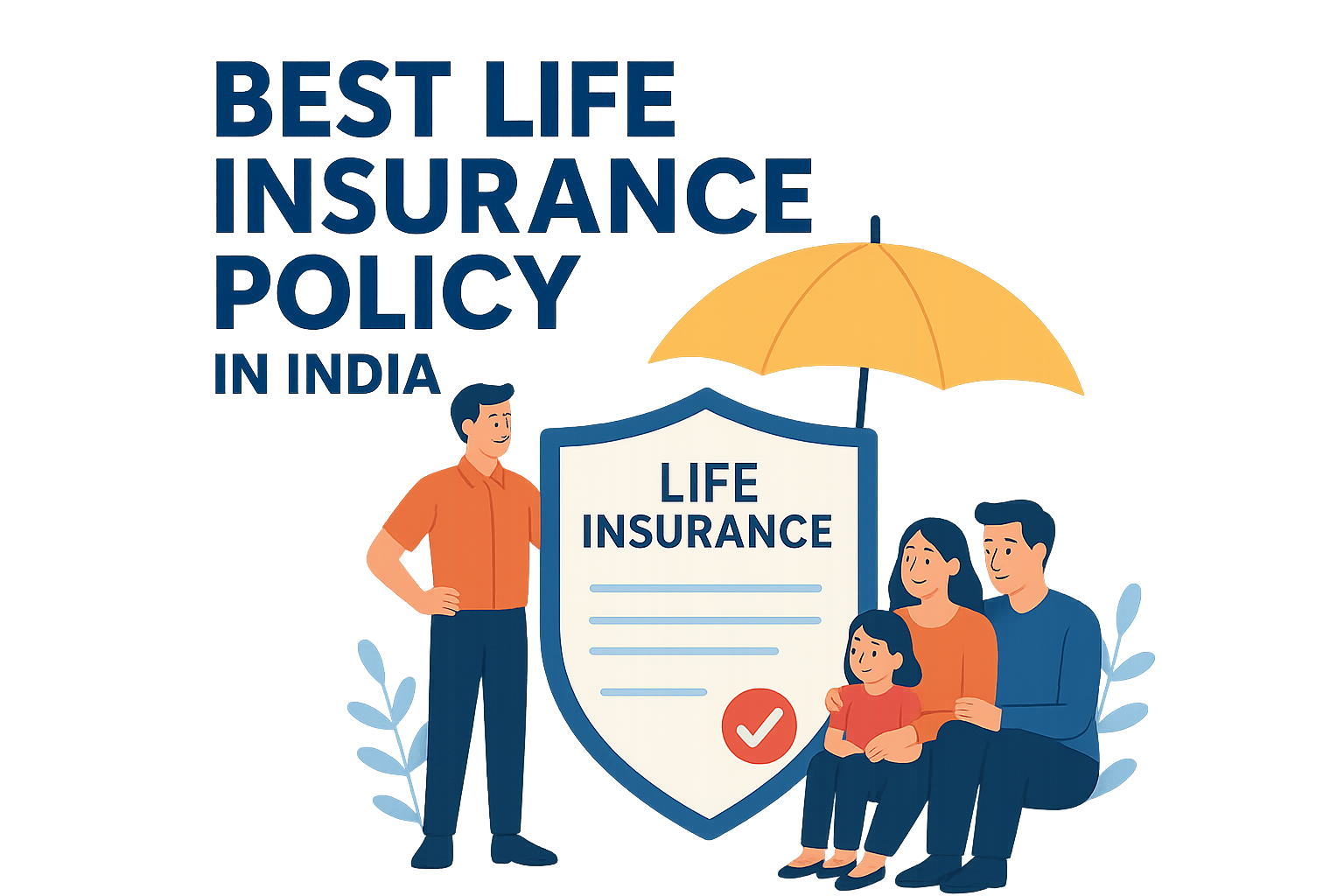- Importance of CSR
- List of Life Insurer CSR
- Types of Life Insurance Claims

Himanshu is a content marketer with 2 years of experience in the life insurance sector. His motto is to make life insurance topics simple and easy to understand yet one level deeper for our readers.
Reviewed By:

Sharan Gurve has spent over 9 years in the insurance and finance industries to gather end-to-end knowledge in health and term insurance. His in-house skill development programs and interactive workshops have worked wonders in our B2C domain.
Updated on Jun 25, 2025 8 min read
Claim Settlement Ratio of Life Insurance Providers: 2025
Checking the best life insurance claim settlement ratio is very important before buying a life insurance plan as it indicates how many claims the insurer has settled in a given financial year against the total number of claims received by them.
The claim settlement ratio is calculated in percentage and it is calculated separately by every life insurer to showcase their claim settlement ability in 1 financial year. The report containing the CSR of all the insurers is released by the insurance regulatory, IRDAI, on an annual basis after each financial year.
A life insurer having a CSR of more than 90% is considered to be reliable and the companies with more than 95% CSR are known to be the best when it comes to considering them for buying a life insurance product.
The List of Claim Settlement Ratios of Life Insurers in India for 2021-2022
Here, we’ve listed the claim settlement ratios of life insurers in India as demonstrated in the latest 2021-22 financial year reports released by the IRDAI.
In the above report:
- The claim settlement ratio denotes the percentage of the claims settled by the given insurers in the year 2021-22.
- The Solvency ratio denotes the excess assets over liabilities of a life insurer and is mandated to be at 1.5 by the IRDAI.
How is Life Insurance Claim Settlement Ratio Calculated
As we understand, the claim settlement ratio is a percentage of the total number of claims settled by the insurer from the total claims received throughout a financial year. Please note that the CSR is estimated for all the insurance products offered by the insurer, not for individual products.
Lets understand how a CSR is calculated through the following example:
’X’ insurance provider received a total number of 1,400 death claims under the financial year of 1 April 2022 and 31 April 2023.
The insurer settled the 1,360 death claims; 20 claims were rejected, and the remaining 20 have not been settled yet.
- In this case, the CSR of the insurer for its company is (1,360/1,400)*100 = 97.14.
- The claim rejection percentage or claim repudiation ratio is (20/1,400)*100 = 1.4%.
- The claim pending ratio is (20/1,400)*100 = 1.4%.
We have to understand that usually the reason why claims are rejected are due to the misinformation provided by the life assured, fraudulent activities, and incomplete or incorrect paperwork by the policyholders.
What is Considered a Good Claim Settlement Ratio?
Simply put, the higher the claim settlement ratio is, the more trustworthy the insurer is. Generally, a CSR above 90% is considered good, and it means the insurer company is financially secure. If the CSR of an insurance provider is more than 95% then it is believed that the insurer is excellent with settling insurance claims and is very reliable to buy an insurance plan from.
Why is Life Insurance Claim Settlement Ratio Important?
Choosing the insurer with the highest claim settlement ratio in life insurance is important because after your demise you won’t be there to sort any issues that may arise regarding the settlement of your life insurance claim. Choosing an insurer with a good record can ensure that the death benefit will reach your nominees on time. This can also be ensured by being truthful with the information that you provide, and filling the paperwork accurately and completely. Apart from CSR, you can consider other factors to check insurer reliability before making any decision, like online reviews, the experience of another policyholder from your known, its solvency ratio, annual premiums, assets under management, product portfolio, and the features of a life insurance policy.
Types of Life Insurance Claims
There are two types of claims in life insurance: Death and maturity claims. To learn more about these claims check out the subtopic below:
Death Claims
In the event of a policyholder’s unfortunate death, their nominee can submit for a death claim. The insurer will pay out the life cover to the nominee. To opt for a claim, you must inform the insurance provider of the policyholder’s death, which is necessary with proper documents. However, the death benefit amount is tax-free under Section 10 (10D) of the Income Tax Act.
Maturity Claims
Maturity benefits are the sum assured along with bonuses given to policyholders when they survive the policy tenure. In order to claim for maturity benefit, the insured person must fill out a necessary discharge form and submit it with the insurer. Moreover, the maturity benefit is tax-free under Section 10 (10D) of the Income Tax Act.
Documents Required for Life Insurance Claim Settlement Process
To opt for a death claim, you have to submit some documents. Here, we’ve listed the required documents for the claim settlement process:
- Completely filled and signed claim form
- Original policy documents
- FIR
- Reports of post-mortem
- Death Certificate
- Personal ID proof of nominee
- Address proof of nominee
- Hospital documents
- KYC documents like photo ID copy, address proof
- Bank details
- Canceled cheque
- Other documents required by insurer
Factors That Affect The Claim Settlement Ratio of Life Insurance Providers
There are some factors that may affect the insurer’s overall claim settlement ratio. For instance, if the claim is rejected due to misrepresentation or fraud by the policyholder, it’ll also affect the overall insurance provider’s CSR.
Non-disclosure
Nowadays, it’s quite a common reason that may affect insurers’ overall CSR. People don’t disclose their pre-existing health conditions to the insurer to reduce the premium amount. It may help to reduce premiums, but it’ll affect the dependents at the time of claim and may even lead to claim rejection. In this case, the insurer may reject your claim.Fraud
Suppose policyholders intentionally submitted the wrong documents, and the insurer gets suspicious about the authenticity at the time of claim submissions. In that case, it may lead to claim rejection, impacting the overall CSR.Nomination update error
Sometimes, the insured person forgets to change or update the nominee if something happens to the nominee that they initially selected. It may lead to a delay in the claim process while settling the claim.
Conclusion
Hopefully, your doubts related to the claim settlement ratio are cleared. Now, you’re aware of the importance of checking CSR while buying a life insurance policy. By checking CSR, you can be sure about insurer reliability. It also gives you peace of mind about your nominee’s financial future.
Claim Settlement Ratio For Life Insurance: FAQs
1. Why is the claim settlement ratio important?
Claim settlement ratios are important, as they showcase the no. of claims being settled through the insurer as opposed to the total number of claims received in a financial year.
2. How is claim settlement calculated?
(Total number of claims settled in a year/ Total number of claims received in a year) X 100 = Claim Settlement Ratio (CSR).
3. How do you check the claim settlement ratio in irda?
You can check every insurer& 039;s claim settlement ratio on PolicyX.com data lab, although you can also check over IRDAI& 039;s official website. The IRDAI publishes annual reports at the end of each financial year.
4. What is a good claim settlement ratio?
A claim settlement ratio of above 90% is considered a good claim settlement ratio.
5. What is the difference between the claim ratio and the claim settlement ratio?
The claim ratio refers to the number of claims being raised, and the claim settlement ratio refers to the number of claims being settled against the total number of claims received in a financial year.
Life Insurance Companies
Share your Valuable Feedback
4.6
Rated by 862 customers
Was the Information Helpful?
Select Your Rating
We would like to hear from you
Let us know about your experience or any feedback that might help us serve you better in future.


Written By: Himanshu Kumar
Himanshu is a seasoned content writer specializing in keeping readers engaged with the insurance industry, term and life insurance developments, etc. With an experience of 2 years in insurance and HR tech, Himanshu simplifies the insurance information and it is completely visible in his content pieces. He believes in making the content understandable to any common man.




















Do you have any thoughts you’d like to share?